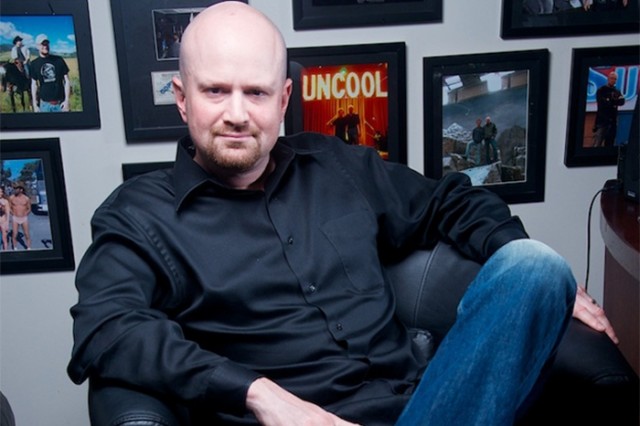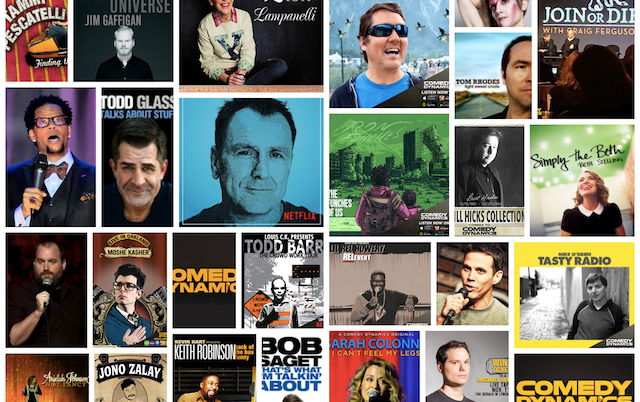The State of Comedy in 2016: Is This a Diamond Age of Comedy?


The State of Comedy in 2016
What is the state of comedy in 2016? The business of comedy seems to be booming. There are more clubs now than there were ten years ago, the number of stand up comics is greater than ever before, and there are new outlets for comedy popping up on what seems to be a constant basis. It feels like everyone wants a piece of the comedy business these days but is comedy really experiencing a surge? Brian Volk-Weiss, President of Comedy Dynamics says yes, and that we’re not just in a golden age of comedy- we’re in a diamond age. Brian Volk Weiss has been in the business of creating comedy for two decades, and helps to create some of the best albums and specials from some of the top comedians in the industry. We talked with Brian about the state of comedy today, and why he believes this is the diamond age of comedy.
The State of Stand Up Comedy in Clubs
Brian Volk-Weiss is calling it. He says, we’re in the Diamond Age of comedy, and he’s crediting a number of indicators. For one thing, he says the audience for comedy in Los Angeles is exploding. Volk-Weiss has been driving past the lines outside of the biggest clubs in LA on Friday nights for 17 years, and says most of the shows used to get anywhere from 50 to 100 people waiting to get in. In 2015, he said he’s watched those numbers triple. Not only are there more people waiting to get into the clubs, he says, there has also been a dramatic increase in the number of venues that offer comedy. “The amount of comedy clubs and comedy venues that are popping up- I don’t think it should be forgotten or taken for granted that a comic book store in LA is now a major source of stand up comedy,” he said referring to the Nerd Melt showroom, which takes place in the back of LA’s Meltdown comic book store. “Its a comic book store I’ve been reading about my whole life so it is so surreal to me, that this comic book store seemingly out of nowhere suddenly became the spot for stand up comedy. Take that nugget and then apply it to 1000 other little things here or there.”
Never in my 17 years of being in this business have I seen multiple comedy clubs in multiple cities moving to bigger places and spending millions of dollars, to build new kitchens and to decorate and upscale things. That’s a very very new phenomenon.
Volk-Weiss can remember a time when there were only 3-6 places to perform comedy in Los Angeles, and now he says there are 30 to 40. Comics in Los Angeles can now do 5 or 6 shows a night. “Up until about 4 or 5 years ago that could only be done in New York.” And it’s not just Los Angeles enjoying the growth. Brian said he sees similar situations occurring now in other cities, like San Francisco, Denver, Chicago, and Austin.
The State of the Comedy Special
You’re going to see 800 hundred people waiting on line to get in and you’re going to see scalpers and you’re going to be like ‘am I at the right place? this can’t be for me.’ That is the Netflix Effect.”
The Netflix Effect in Stand Up Comedy
Those algorithms are part of what Brian calls the “Netflix Effect.” You may have noticed that when a special is released now, it seems a bit less “special” than it did five years ago. Whereas a new comedy special used to be a momentous occasion involving billboards and bus advertisements, and commercials, and radio ads, and tons of promotion, now the release of a special is much quieter. Volk-Weiss says don’t be fooled into thinking that specials are less important. He says despite the lack of ads and promotion, comedy specials are enjoying more success, more viewers and bringing bigger results for the comedians who star in them, then ever before.
Brian explained. “This is what I say to every artist who has never done a Netflix special before and I’ll just use Netflix as the example. Whenever I’m working with a comedian whose never had a special on Netflix I always say to him or her, okay here’s what’s going to happen. Your special is going to come out and life is going to be very similar for six to eight weeks. Then, one day you’re going to be doing a show and lets say you’re doing a show in Dallas and lets say you were in Dallas last year and you sold 220 tickets. You’re going to get out of your hotel and you’re going to walk to the venue, and you’re going to see 800 hundred people waiting on line to get in and you’re going to see scalpers and you’re going to be like am I at the right place? this can’t be for me. That is the Netflix Effect.”
Netflix has a staggering amount of data, Brian says, relating to their algorithm and viewing patterns
The end result is that the comic ultimately sells a lot more tickets on tour. “Never, ever ever would you have seen a comedian that in a six month period did the same venue in Dallas and sold 220 tickets and then go on to sell 800 tickets with no change in marketing, no movie coming out, not starring in a sitcom. And that’s the Netflix effect. That’s also the YouTube effect. And the same thing is happening now at HBO with them doing the whole HBO Go of it all.”

Other Trends in Comedy in 2016?
We talked about comedy trends in 2016 and one thing Volk-Weiss pointed to is a growing gay and lesbian genre of comedy which he says “is really building up a lot of steam.” Another niche– the “Silver Lake” comedy for West Coasters, and its East Coast Equivalent, the “Soho” style comedy that would have been called alt once upon a time– has become the norm for comedy. Ultra Blue Comedy is also making a comeback according to Volk-Weiss, and women are more in demand in comedy than ever before.
Curation is another buzzword in comedy in 2016. “I hear it from Netflix all the time. I don’t think Seeso has done a press release or Evan Shapiro has done an interview without mentioning the word curation. So there’s a lot of stuff out there and curation is very important to make sure the marketplace knows there is a difference in going here versus there.”
Quality over quantity is something Brian is looking at for his own company in 2016. After recording and selling 41 specials in 2015, Brian expects that his company will be looking to do about 10 to 15% fewer specials in 2016. “I want to make sure that our brand always stands for very high-end material and very high-end talent. And everybody else is doing it too. Netflix’s process to pick talent is insanely precise and very good. Same for SHO and HBO and now Seeso. So I see everybody doing that and its my intention to do the same.”
With such an excellent track record behind him for spotting talent, I asked Brian who was on his radar as the next big stars in comedy. Brian says Tom Segura is a perfect example of someone who Comedy Dynamics put resources into developing before he was a comedy star. Another example he gave was Moshe Kasher. He’s also predicting a great future for comedian Ali Wong. “We just did a special with Ali Wong that we’re actually in the middle of a bidding war for so I’m not exactly sure where that’s going to end up yet. She is going to be so big– I mean so big it’s just, I can’t even believe how lucky we were to get to work with her at this stage.” Cameron Esposito is another emerging comedian Brian says is on her way to being “absolutely huge.” And finally, there’s someone who is hardly just starting out, but may be just starting to peak. “Somebody who I love and he’s been around a long time, and I don’t know why anybody didn’t do a special before us, but Eddie Pepitone, we did his first special and we believe to this minute his only special. I know he’s not an 18-year-old guy running around but I think he’s still got a lot of fuel in the tank.”
Comedy Dynamics is the largest independent comedy production and distribution company in North America, working with a wide range of comedic talent including Kevin Hart, Aziz Ansari, Jim Gaffigan, Bill Burr, Chelsea Peretti, Craig Ferguson, Jim Norton, Tim Minchin, Katt Williams and many more. Comedy Dynamics and Brian Volk-Weiss are also on the team that created and produced Join or Die with Craig Ferguson for the History Channel, out this February.
